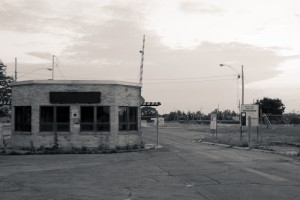“Life is just pain and piss; it’s nothing that I will miss”
– Wood Of Ypres, “Wet Leather” (2009)
I get depressed when I hear lyrics like that. As an artist, I love life. It’s the feelings that you need to create art, and being alive is the only way art gets created. There’s my deep thought for the day.
I’ve delved further into Sontag’s collection of essays that makes up her book, On Photography. I’m having a hard time really gauging her stance on photography as an art. She does hit it on the head that photography is a special medium (I’m on the third essay and she’s made it her mission to hammer that idea home in each essay thus far), but the feelings I get from her regarding photography range from neutrality to disdain. Sontag, having grown up during the period where photography went from being a technical hobby for the rich to having reached a critical mass among consumers, certainly offers a unique perspective on its growth as an artistic medium.
I’m still working on the “Descendants of Abraham” piece, just not actively at this point. I guess a little bit of ingrained adult ADD set in when Sontag’s book caught my eye again. To be fair, I’ve had the book for over a year, I am just now getting around to reading it seriously. Also, right now, I’m spending a lot of time, where I normally would be creating, to looking at some critical theory aspects of art.
We did a unit on Saussure this past Spring in my Art History Introduction to Critical Theory course. Saussure, of course, is considered the father of modern semiotics, i.e. the study of signs. His American counterpart, Charles Sanders Pierce, further expounded on Saussure’s work. There exist three categories of signs: symbol, icon, and index. The category into which a sign is placed is dependent upon the nature of the relationship between the sign and its meaning. This is where things start to get a little fuzzy and I’m trying to piece them together (a full 2 months after the end of the semester, no less). It’s the index category that I’m having to most trouble sorting out.
An index is a sign that has a direct causal link to that which is signified – think of a stoplight warning sign and the actual stoplight about which you are warned – that sign is an index. An icon is a sign that stands for an object because it resembles it, while a symbol represents an object by virtue of laws, traditions, etc. (the letters on this screen are symbols). Where I’m having trouble with indexes is when an icon or a symbol crosses the line and becomes an index. The professor did say that the index is the most troubling aspect of semiotics, so we should not worry too hard if we don’t grasp it right away.
One of the things we were told in the class by the professor is that of all the mediums, photography is an index as the image has a direct link to what it is representing. Let’s say, however, that we have an photograph of a Ford Mustang for an advertisement. Does that not make the photograph an icon as it is representing a particular kind of car? Another questionable example would be the work of Dorothea Lange during the Great Depression. Those portraits were meant to represent the working poor during the Great Depression, in which case my understanding would place them as icons. Where is the direct causal relationship between the sign and the signified?
Sometimes I feel like the answer is right in front of me, but when I reach out, it scurries away as if playing cat-and-mouse with my intellect.
At any rate, I will leave you with one of my own to ponder the question of semiotics. This is an image of the main gate at the Seneca Army Depot in Romulus, NY. In the 1980’s this US Army installation was home to the world’s largest stockpile of nuclear weapons. If memory serves, I believe it held just under 3,000 weapons in storage a mere 75 miles from where I grew up in Cincinnatus, NY. The base was closed in the 1990’s under the military reductions begun under President George HW Bush and continued under President Bill Clinton. This main gate, a few buildings around where the motor pool was located, and the enlisted housing area remain. The enlisted housing area is occupied with residents while the area where the weapons were stored is now part of the NY State Department of Corrections. What makes this an index rather than an icon? There are no right or wrong answers and I look forward to having a nice discussion.

Leave a Reply